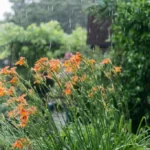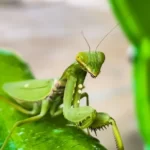Pruning pumpkin plants is a valuable practice that contributes to the overall health and productivity of your pumpkin patch. While pumpkins are known for their sprawling vines and lush foliage, strategic pruning can lead to improved air circulation, better sunlight exposure, and larger, healthier fruits. This article explores the importance of pruning pumpkin plants and highlights the benefits that come with this horticultural practice. By delving into when to prune, essential tools, and safety precautions, you’ll be equipped to nurture robust pumpkin plants and maximize your harvest.
When to Prune Pumpkin Plants
Understanding the growth stages of pumpkin plants is crucial for determining the optimal time to prune. As a general guideline, early intervention is key. Begin pruning when the vines start to develop lateral shoots or suckers. These are the small shoots that emerge from the leaf axils along the main vines. It’s advisable to start pruning around the time the plants begin to set fruit. This timing ensures that the plant directs its energy towards developing robust pumpkins while maintaining a healthy balance of foliage. Pruning too early may hinder overall growth, while delaying pruning can lead to a tangled mass of vines and reduced fruit production.
Tools and Safety Precautions
Essential Pruning Tools:
- Hand pruners or pruning shears for precision cuts.
- Loppers for thicker vines and branches.
- Sterilized cutting tools to prevent the spread of diseases.
Safety Measures for Effective Pruning:
- Wear gloves to protect your hands from scratches and irritants.
- Use long sleeves and pants to shield your skin from contact with rough vines.
- Consider safety glasses, especially when working with larger vines and using loppers.
- Watch for stinging insects or other potential hazards in and around the pumpkin patch.
Before embarking on the pruning process, ensure your tools are clean and sharp to make precise cuts without causing unnecessary stress to the plants. Following these safety precautions will help you enjoy a successful pruning session while safeguarding your well-being in the garden.
Types of Pruning for Pumpkin Plants
Pruning pumpkin plants involves various techniques targeted at managing their growth and optimizing fruit production. Here are key types of pruning for pumpkin plants:
Removal of Lateral Vines:
- Identify and remove lateral vines that compete for nutrients.
- Focus on retaining the main vine and a select number of secondary vines.
Thinning Out Leaves and Excess Growth:
- Remove overcrowded or shaded leaves to improve sunlight penetration.
- Thin out excessive foliage to enhance air circulation, reducing the risk of diseases.
Pruning Suckers and Non-Productive Branches:
- Eliminate suckers, which are shoots emerging from leaf axils.
- Remove non-productive branches to redirect the plant’s energy towards fruit development.
Understanding and implementing these types of pruning techniques will contribute to a healthier and more productive pumpkin plant.
How to Prune Pumpkin Vines
Step-by-Step Guide to Pruning Lateral Vines:
- Identify the main vine and distinguish it from lateral vines.
- Use pruning shears or loppers to carefully remove selected lateral vines.
- Focus on retaining a balance between main and secondary vines for optimal nutrient distribution.
Techniques for Thinning Out Leaves:
- Choose leaves that are shading fruits or crowding the plant.
- Use pruning shears to trim excess leaves, ensuring not to damage healthy foliage.
- Prioritize removing leaves that show signs of disease or pest infestation.
Controlling Excessive Foliage:
- Assess the overall density of the foliage.
- Trim back excessive growth to promote air circulation and sunlight exposure.
- Create a well-ventilated environment to reduce the risk of fungal diseases.
By following these steps, you can efficiently prune pumpkin vines, creating a more conducive environment for robust pumpkin development.
Pruning Pumpkins for Size and Shape
Controlling the Number of Pumpkins per Vine:
- Assess the number of pumpkins developing on a single vine.
- Consider removing excess small or misshapen pumpkins to allow the plant to allocate resources to the remaining ones.
Enhancing Pumpkin Size through Strategic Pruning:
- Identify the primary pumpkin on each vine.
- Prune away secondary pumpkins to direct more nutrients to the chosen main pumpkin.
- Foster larger, well-formed pumpkins through targeted pruning.
These practices ensure that each pumpkin receives optimal resources, resulting in a more bountiful and visually appealing harvest.
Pruning to Prevent Diseases
Pruning pumpkin plants plays a crucial role in preventing and managing diseases. Here’s how to incorporate disease prevention into your pruning practices:
Proper Airflow and Disease Prevention:
- Thinning out leaves and removing excess foliage enhances airflow.
- Improved airflow reduces humidity around the plant, creating an environment less favorable for fungal diseases.
Pruning to Reduce Humidity Around the Pumpkin Plants:
- Focus on removing dense areas of foliage, especially in the plant’s center.
- Prune vines judiciously to allow sunlight to penetrate and dry out damp areas.
- Adequate ventilation helps mitigate the risk of diseases like powdery mildew and downy mildew.
By incorporating these practices, you not only promote plant health but also create conditions that discourage the development and spread of common pumpkin diseases.
After-Pruning Care
Proper Disposal of Pruned Materials:
- Collect and dispose of pruned vines and leaves to prevent the buildup of disease-carrying debris.
- Compost disease-free materials to recycle nutrients back into the garden.
Monitoring the Plants for Signs of Stress or Disease Post-Pruning:
- Keep a close eye on pruned plants for a few days.
- Watch for any signs of stress, disease, or pests and take prompt action if needed.
- Provide extra care, such as watering, to support the plants during their recovery period.
Maintaining vigilance and offering proper care after pruning ensures that your pumpkin plants transition smoothly and continue to thrive.
Common Mistakes to Avoid
Over-Pruning Pitfalls:
- Avoid excessively removing foliage, which can lead to sunburn on fruits.
- Balance is key; aim for strategic pruning without compromising the overall health of the plant.
Incorrect Timing and Its Impact on Plant Health:
- Pruning too early can stunt plant growth.
- Delayed pruning may result in tangled vines and reduced fruit production.
Inadequate Tool Maintenance:
- Use clean and sharp tools to prevent unnecessary stress to the plants.
- Regularly sterilize cutting tools to minimize the risk of disease transmission.
Avoiding these common mistakes will contribute to successful pumpkin plant management, fostering a healthy and productive garden.
Creative Uses for Pruned Materials
The materials pruned from your pumpkin plants can find creative and resourceful applications in and around your garden. Consider these inventive uses:
Utilizing Pruned Vines and Leaves in Compost:
- Incorporate pruned materials into your compost pile to enrich the soil.
- The organic matter from pumpkin vines and leaves adds valuable nutrients to the compost.
DIY Projects and Crafts Using Pumpkin Plant Materials:
- Create rustic wreaths or decorative garlands with dried pumpkin vines.
- Use pruned leaves for pressed botanical art or crafting projects.
- Repurpose larger stems into garden stakes or trellises for other plants.
These creative uses not only minimize waste but also add a touch of natural beauty to your gardening endeavors.
Conclusion
Pruning pumpkin plants is an artful practice that goes beyond enhancing plant health and optimizing yields. By strategically trimming vines, leaves, and non-essential growth, gardeners can create an environment conducive to robust pumpkin development. Proper timing, essential tools, and safety precautions form the foundation of successful pruning.
Moreover, the benefits extend to disease prevention, with improved airflow and reduced humidity mitigating common fungal issues. After-pruning care, including proper disposal of pruned materials and vigilant monitoring, ensures a smooth transition for the plants.
Embrace the creative uses for pruned materials, turning them into compost gold for your garden or crafting unique decor from the remnants of the growing season. As you venture into the art of pumpkin plant pruning, you not only cultivate healthier plants but also contribute to a sustainable and aesthetically pleasing garden.




